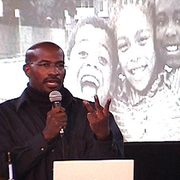-
Last week, several vans of Carleton students journeyed up to Minneapolis to participate in the Institute for Agriculture and Trade Policy’s conference, Lessons from NAFTA: Building a New Fair Trade Agenda. Citizens of Mexico, the United States and Canada gathered to reflect on the tragedies that NAFTA hath wrought and share hope for change in the future.
According to the USDA’s website, the North American Free Trade Agreement (NAFTA) began to remove barriers to trade and investment among Canada, the United States and Mexico with the strike of the clock on January 1, 1994. Many tariffs were removed immediately, while others were phased out in a process that ends in 2008. The goals of NAFTA include reducing barriers to trade, increasing cooperation and working conditions throughout North America, creating jobs, creating a safe tri-national market and mutually advantageous trade rules and stimulating investment. Many argue though that NAFTA has had intensely negative impacts on small family farmers and consumers, while reversing many previously high standards for labor, the environment and food safety and sovereignty as the investment-stimulating aspect of NAFTA has been taken advantage of by multinational corporations.
Acclaimed liberal writer John Nichols of The Nation gave the keynote address of the conference, beginning with a sweeping criticism of North American media and the danger of general American (or perhaps Unitedstatsian) ignorance about the world beyond their borders. Moving into the topic at hand, Nichols stated, “The missing factor in debates about trade policy is people rather than elites.” He stated that trade should be “based on humans and human values” before diving into a critique of each Democratic Presidential candidate’s stance on the issue, essentially concluding that no candidate but the “fringe” candidates are willing to be critical of Free Trade. He highlighted the core problems with trade as a campaign issue, noting first that campaigns are financed by “Wall Street, not Main Street.” Additionally Nichols noted that political parties don’t like trade issues because they don’t bring in contributions and they vary significantly by region across the country.
Continue by clicking the “read more” link below
-
“Try this experiment. Go knock on someone’s door in West Oakland, Watts or Newark and say: ‘We gotta really big problem!’ They say: ‘We do? We do?’ ‘Yeah, we gotta really big problem!’ ‘We do? We do?’ ‘Yeah, we gotta save the polar bears! You may not make it out of this neighborhood alive, but we gotta save the polar bears!’ ”
If this key communication disconnect continues, Jones, a visionary Oakland-based activist, explains, we will never find solutions to either social inequality or environmental destruction. Instead, we need a “green economy strong enough to lift people out of poverty.” Green For All, based out of the Ella Baker Center for Human Rights in Oakland, seeks to bring “green collar” jobs to urban areas. If young people of color start installing solar panels now, explains, Jones, they’ll become managers in five years, owners in ten, and eventually inventors.
The publicity this initiative has been enjoying the past week (New York Times and The Nation) speaks to the revolutionary nature of the program, and a revolution people have been waiting for. Van Jones believes these two movements have been separated for too long, and his passion is contagious. The fight to curb climate change has literally been a fight to maintain the environmental status quo, a conservative approach that turns off many people who do not benefit from the way things are. Van Jones’ environmental revolution provides hope for both sides of the double helix—-hope for a more inclusive, diverse environmental movement, and hope to lift people of color out of poverty.
Categories
- Building and Planning
- Carleton's Wind Turbines
- Climate Change
- Conferences
- Cowling Arboretum
- Ecosystem Management
- Emissions and Offsets
- Energy Sources & Uses
- Environmental Justice
- Events
- Food
- Higher Education
- International News
- National News
- News
- STA Program
- Student Life
- Student Projects
- Sustainability
- Sustainable Planning & Development
- Transportation
- Waste

